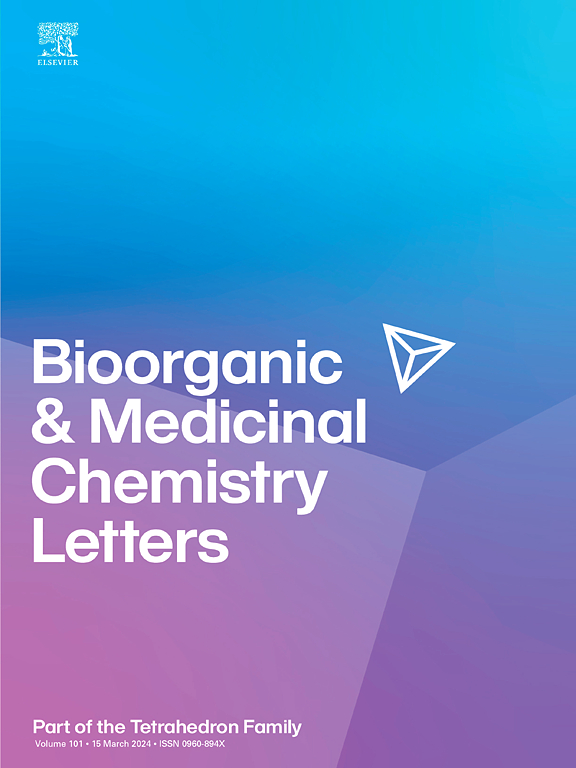Fluorescein diacetate (FDA) should not be used to study human carboxylesterase 2 (CES2) in complex biological systems without validation
IF 2.2
4区 医学
Q3 CHEMISTRY, MEDICINAL
引用次数: 0
Abstract
The utility of fluorogenic chemical tools for investigating processes in biologically complex systems depends on validating their specificity in the same system. This is particularly crucial for tools that report on enzymatic activity, especially when enzymes with similar activity are also present which is often true for serine hydrolases. One such serine hydrolase is human carboxylesterase 2 (CES2). CES2 is a key xenobiotic metabolism enzyme responsible for the hydrolysis of drugs belonging to multiple classes. Due to its importance in drug metabolism and potential as a cancer biomarker, there is a need for reliable and accessible tools to study CES2. Fluorescein DiAcetate (FDA) is a commercially available fluorogenic compound that has been employed to study CES2 activity in various systems. Studies carried out in vitro have shown FDA prefers hydrolysis by CES2 over closely related CES1. However, the specificity of FDA for CES2 over CES1 and other hydrolases in complex biological systems has not been rigorously evaluated. This study aimed to characterize FDA as a tool for studying CES2 in complex biological systems using computational, biochemical, and live cell imaging. Our results indicate that FDA is unsuitable for studying CES2 in systems with multiple hydrolases, like HepG2 cells, but may be used when CES2 is the predominant hydrolase, such as in overexpression models. We advise caution when using FDA to study CES2 and emphasize that rigorous validation is necessary to ensure that chemical tools used in complex biological systems specifically report on the intended molecular target in each experimental context.

未经验证,不应将双醋酸荧光素(FDA)用于复杂生物系统中人羧酸酯酶2 (CES2)的研究。
荧光化学工具用于研究生物复杂系统中的过程取决于在同一系统中验证其特异性。这对于报告酶活性的工具尤其重要,特别是当具有类似活性的酶也存在时,这通常适用于丝氨酸水解酶。其中一种丝氨酸水解酶是人羧酸酯酶2 (CES2)。CES2是一种关键的外源代谢酶,负责多类药物的水解。由于其在药物代谢中的重要性和作为癌症生物标志物的潜力,需要可靠和易于获取的工具来研究CES2。双醋酸荧光素(FDA)是一种市售的荧光化合物,已被用于研究CES2在各种系统中的活性。体外研究表明,FDA更倾向于CES2的水解,而不是密切相关的CES1。然而,在复杂的生物系统中,FDA对CES2的特异性比对CES1和其他水解酶的特异性还没有得到严格的评估。本研究旨在通过计算、生化和活细胞成像,将FDA作为研究复杂生物系统中CES2的工具。我们的研究结果表明,FDA不适合在具有多种水解酶的系统(如HepG2细胞)中研究CES2,但当CES2是主要的水解酶时,例如在过表达模型中,可以使用FDA。我们建议在使用FDA研究CES2时要谨慎,并强调严格的验证是必要的,以确保在复杂生物系统中使用的化学工具在每个实验环境中都能明确报告预期的分子靶标。
本文章由计算机程序翻译,如有差异,请以英文原文为准。
求助全文
约1分钟内获得全文
求助全文
来源期刊
CiteScore
5.70
自引率
3.70%
发文量
463
审稿时长
27 days
期刊介绍:
Bioorganic & Medicinal Chemistry Letters presents preliminary experimental or theoretical research results of outstanding significance and timeliness on all aspects of science at the interface of chemistry and biology and on major advances in drug design and development. The journal publishes articles in the form of communications reporting experimental or theoretical results of special interest, and strives to provide maximum dissemination to a large, international audience.

 求助内容:
求助内容: 应助结果提醒方式:
应助结果提醒方式:


